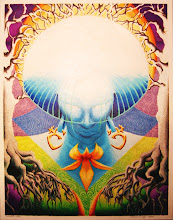
Graeme Stemp-Morlock
for National Geographic News
August 7, 2008
Unlike short-lived solar eclipses or unpredictable auroras, meteor showers regularly offer skywatchers a dazzling show.
Soon the curtain will rise on one of the best of these showers: the Perseids, so called because the meteors appear to originate in the constellation Perseus.
Slated to peak sometime during the night and early morning of August 11 to 12, the shower offers one of the year's best chances to see a shooting star.
Under perfect conditions, observers can expect to see about 90 to100 meteors an hour, said Wayne Hally, a self-professed "meteor geek" who writes a newsletter for the North American Meteor Network.
Hally spends a few hundred hours a year watching for meteors from his base in northwest New Jersey.
The stargazer said he expects the Perseids to have a sustained peak over several hours this year.
"Based on last year's results, it appears that the actual peak was not at a specific time but lasted a day and a half surrounding that date," Hally said.
"The peak [this year] might be the whole night."
A Blaze of Glory
Meteor showers happen regularly when Earth plows through a stream of dust and small rocks trailed by a comet after its close approach to the sun.
(Related: "Meteor Dust May Affect the Weather, Study Says" [September 13, 2005].)
109P Swift-Tuttle, the comet responsible for the Perseid meteor shower, orbits the sun every 133 years. The comet last made a close approach in 1992, resulting in a spectacular meteor shower with rates four times higher than average.
"The Perseids have been seen since 36 A.D., almost 2,000 years ago. Most [meteor showers] have not been around that long, as streams spread out," Hally said.
"The comet that produces the Perseids is in a good reliable orbit. So it's been around for 2,000 years, and it will probably be around for another 2,000."
More than just a pretty spectacle, meteors offer astronomers a glimpse back in time to when planets formed.
Paul Wiegert, a physicist and astronomer at Canada's University of Western Ontario, studies meteors with the Meteor Physics Group, the largest research body of its kind in North America.
"[Comets] are interesting because they are extremely old, forming when planets did, and they are unaltered since. With comets, you can observe what went into making the Earth, its original ingredients," Wiegert said.
Occasionally pieces of comet debris survive the fiery descent through our atmosphere and crash into Earth as meteorites.
"Meteorites can be billions of years old, much older than anything on Earth," Wiegert said.
"It's like a free sample of material from outer space. Space missions cost millions of dollars to go get that material, but sometimes we can get it delivered here for free."
(Related: "Chicago Meteor Shower a Windfall for Scientists" [May 13, 2003].)
Starry Nights
Observers on the U.S. West Coast will likely get the best view of the peak just before dawn on August 12.
But the Perseids will put on a good show as seen from any place on Earth for several reasons.
The moon will set between 1 and 2 a.m., making the sky darker and allowing observers to see fainter meteors.
Also, the region in the sky where the meteors appear to come from will rise up higher as the night progresses, so fewer meteors will shoot below the horizon.
Meteors higher in the sky also appear brighter, because they are seen through less distortion-causing atmosphere.
Hally, the meteor buff, says that people who want to see the largest number of meteors possible should find the darkest sky available and face northeast, where the meteors will appear to come from.
And don't forget a warm blanket. Even August can feel cold with the early morning dew, he noted. A reclining deck chair can also help reduce neck strain from looking up.
"[W]ith meteors, you never know exactly what you are going to get," Hally said. "With a telescope on a star cluster, it will look the same today as the next hundred years.
"If you look at the planets, you don't see a lot of change. But with a meteor shower you never really know what's going to happen."

No comments:
Post a Comment